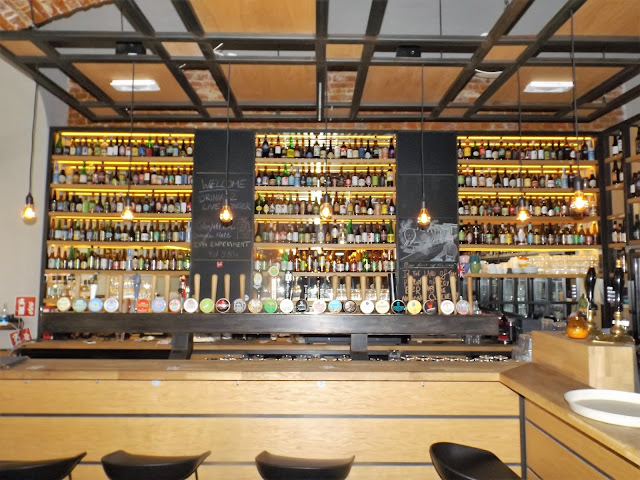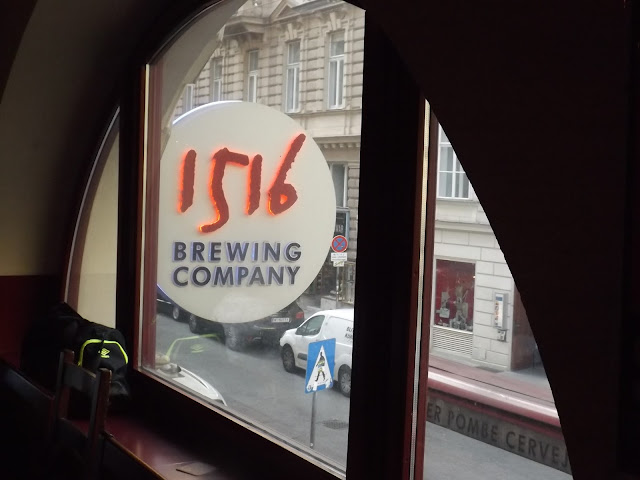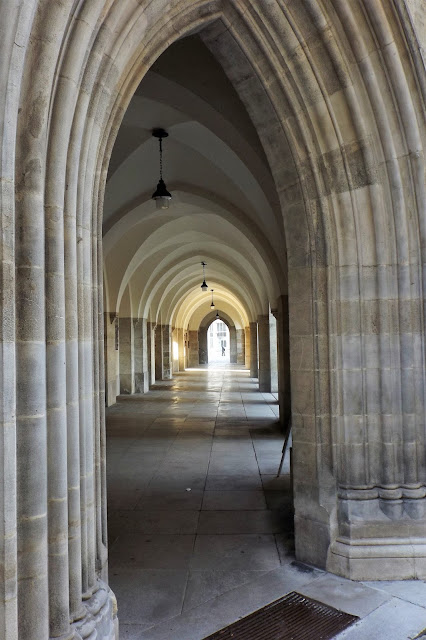Vienna: The City
We had six days to see the sights, and that included our two visits to the Kunsthistorische and one to the Albertina Museum. That took up about a day and a half. We also spent a day in the Vienna Woods and hills. What time remained for exploring Vienna, then, was three and a half days. However, we made the most of it, and knew our away around pretty well afterwards. In total we managed four self-guided walking tours. The Marco Polo Guide to Vienna was our main resource. The three walk tours included in that book are called 1) Back to the Middle Ages: Through the Heart of Vienna; 2) Coffee House Tour Around the Opera House and Hofburg; and 3) Kahlenberg and Leopoldsberg (The Vienna Woods). We also took an older book with us entitled Viennawalks. We undertook Walk #3 from this volume, entitled Noble Vienna. That last one took us two days to complete, and included no less than 27 palaces, as well as much other architecture, several churches, and public plazas.
The photos are mostly in chronological order, though I have blended all the walking tours together and will just use images rather than many words. Some places we visited more than once (Hofburg, Ferstel Palace). Enjoy! If you wish to see a larger version of a photo, simply drop me a line.
Side street view of St Stephan's Cathedral. For scale, note the small
two-storey house attached to the side of the church. The tower
(not shown) is 450' high!! We did not get inside due to crowds.
Speaking of side streets, Vienna has some beauties.
It's easy to lose the main tourist traffic.
It's easy to lose the main tourist traffic.
Side entrance to St. Ruprecht's.
Craft beer was the specialty at Mel's, the largest such place in Austria (Austria still has a ways to go as far as craft beer is concerned, but this place was excellent).
I could only find one actual craft brewery in central Vienna. We had to sit upstairs, as the main floor was a smoking area!!??! Vienna is supposed to rejoin the civilized world this January,
banning smoking virtually everywhere.
We visited many of the classic Viennese cafes, except for a few that were just too busy with tourists. Cafe Sperl was fabulous!
Otto Wagner's Art Nouveau apartment building across the street from the Naschmarkt.
Strudel, espresso, and tea at Cafe Museum (it's a cafe near museums, not a museum itself). The strudel was other-worldly in its goodness.
Evening comes early to the narrow streets. Browsing shop windows became
an enjoyable pastime.
Our adventure to the Vienna Woods began with the full ride on Tram 37, from the university
all the way up to Grinzing.
The charming village of Grinzing, a major wine-producing area, includes this wonderful old tram station. There was a good cafe across the street (behind me), and we stopped here outbound and inbound.
We ended up walking over four miles from Grinzing, and climbing almost 800' (higher than the hill in background).
View of Cafe To Go and on to Vienna, at the summit of our walk.
This was the only hazy day! The rest were perfectly clear. Anyway, this is a telephoto shot down to the Danube from Cafe to Go. The river is about 1000' lower than the cafe.
Central Vienna looking back up towards the Vienna Woods.
An amusing doorbell, from one of our walks.
Schottenkirche. The number of stunningly beautiful churches in Vienna caught us by surprise.
Kinsky Palace and its famous elegant stairway. One of our walks
included visits, mostly exterior, to 27 palaces.
included visits, mostly exterior, to 27 palaces.
Maria am Gestade, not far from Mel's Craft Beer. Built 1313-1414.
Ferstel Palace, now home to Cafe Central and a high class shopping arcade.
Inside the arcade, Ferstel Palace.
We made some serious purchases at Xocolat, inside Ferstel Arcade. Next door was a craft coffee shop, the only one we encountered in central Vienna. What a great pairing of shops! We enjoyed our visit.
Ferstel Palace.
One of 27 palaces on our Viennawalks #3. This one is now an art gallery.
Former palace (see above), now a gallery.
Entrance to the art gallery palace. We didn't know what was upstairs. We went in, went up, and just poked around (see two photos, above).
Yet another palace. Imagine Ball season in Vienna! No wonder Strauss was so beloved.
Minoritenkirche exterior detail.
Minoritenkirche Gothic walkway.
Affectionately called the Chest of Drawers building.
Approaching St Michaelerplatz and Church, the tourist heart of Vienna.
Demel Cafe, Vienna. Terrible strudel, but pretty fine ambience.
Caryatids, supporting much of Vienna for centuries.
This one manages to hold up a building and appear languorous at the same time!
Top half of Vienna's bizarre but very fine monument to the plague. The
Black Death hit Vienna in 1679 and took 15% of the population.
Tea and wine, Vienna. We often found a fabulous historic cafe that was not busy.
Shop window, Vienna.
Shop window, Vienna.
Interior of St. Michael's.
Saturday flea market, St. Michael's. Best room for a flea market I ever saw!
Michaelerplatz, at the entrance to the Hofburg Palace.
Central courtyard of the Hofburg, showing three clocks. Bottom to top: sun dial; mechanical clock; lunar phase clock. All three were working perfectly!!!
The Hapsburg Eagle, soaring high over Europe for many centuries.
Augustinerkirche.
St. Charles' Church, next to the Vienna Museum.
It was sunny and mild the entire week, something we did not expect.
People short and tall were out enjoying the park and the fine weather.
Where there's coffee, there's Deb. Coffee-bike, Vienna.
Two Views of Greenland from 40,000'
Greenland is always a stunning sight from the air, and we crossed a large chunk of it coming home. It was very early autumn, and it all seemed other-worldly. We loved the entire trip, except the layovers at Pearson Airport, Toronto. Those we could do without.
This concludes the on-line trip journal for Vienna, Austria, from late September 2017. Hope you enjoyed your stay. Feel free to leave a comment.
(Be sure to visit the other two Vienna pages here, on Music and Art).
(Be sure to visit the other two Vienna pages here, on Music and Art).
Mapman Mike



























































